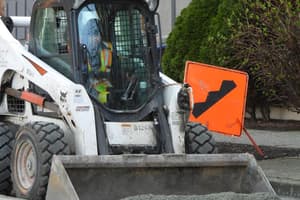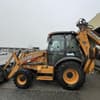Podcast
Questions and Answers
What characterizes Anti-lock Braking System (ABS) scuff marks?
What characterizes Anti-lock Braking System (ABS) scuff marks?
- They appear as consistent, solid marks.
- They are a series of heavy skid marks with uniform spacing.
- They indicate a sudden tire direction change due to collision forces.
- They are intermittent and may disappear within 15-20 minutes. (correct)
How do intermittent skid marks differ from other types of skid marks?
How do intermittent skid marks differ from other types of skid marks?
- They are caused by rapid acceleration from a stop.
- They have long gaps of more than 15 feet. (correct)
- They appear in shallow trenches.
- They indicate a tire's rotation without slipping.
What leads to the formation of skip skid marks?
What leads to the formation of skip skid marks?
- Sustained locked tire skidding.
- Sudden load shifts from braking hard. (correct)
- Locked tires moving over liquid surfaces.
- Rapid application and release of brakes.
Which description accurately defines offset skid marks?
Which description accurately defines offset skid marks?
What is a key feature of a squeegee mark?
What is a key feature of a squeegee mark?
Furrow marks are associated with which of the following?
Furrow marks are associated with which of the following?
What causes a scuff or yaw mark?
What causes a scuff or yaw mark?
Which characteristic defines acceleration scuff marks?
Which characteristic defines acceleration scuff marks?
Flashcards are hidden until you start studying
Study Notes
Types of Skid Marks
- ABS Scuff Marks: Indicate hard braking from a vehicle with anti-lock brakes; appear faint and intermittent, usually fading within 15-20 minutes.
- Intermittent Skid Marks: Characterized by heavy marks with long gaps exceeding 15 feet; result from a driver applying and releasing brakes rapidly, with uniform spacing of 3-4 feet.
- Skip Skid Marks: Display irregular intervals; caused by sudden load shifts when braking, often seen in bouncing trailer vehicles or on bumpy roads.
- Offset Skid Marks: Suggest sudden tire direction changes due to collision forces; help pinpoint the exact location of impact during an accident.
- Squeegee Marks: Temporary strips of dry pavement left by locked tires skimming water off the road; they disappear quickly after the vehicle passes.
- Furrow Marks: Trench-like impressions created by locked tires on soft surfaces (gravel, sand, dirt); initially shallow but deepen as the vehicle continues to skid.
- Scuff or Yaw Marks: Evidence of loss of traction due to excessive speed or oversteering; characterized by tires sliding sideways, making distinctive marks on the pavement.
- Acceleration Scuff Marks: Result from rapid acceleration starting from a stop; show gradually fading dark tire marks indicative of quick speed changes.
- Tire Print: Impression left by a tire rolling over softer materials; provides identifiable patterns that match the tire tread, crucial for vehicle identification.
Studying That Suits You
Use AI to generate personalized quizzes and flashcards to suit your learning preferences.




